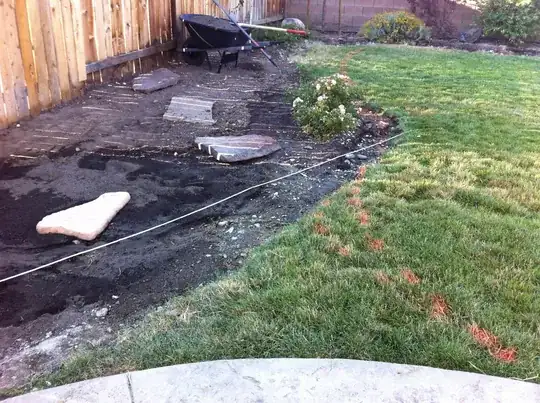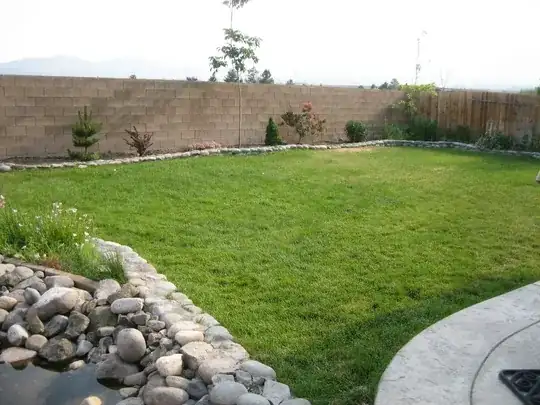Taking into account (nearly) all the comments from below the question, I personally would do the following before putting in some substantial drainage system to help drain what happens to be a relatively small area in your lawn:
Carefully take up the lawn in the "puddling" (low) area and put it to one-side (stack it properly for reuse). Make sure you remove approximately 2inches (50mm) of soil with the grass.
Dig out the soil in that area to a minimum depth of 12inches (300mm), maximum depth of 24inches (600mm).
If you don't encounter, see any problems, I would:
Back fill the hole with the same material that was excavated from that hole. Back fill in 4inch (100mm) thick layers and "lightly" tamp down each layer.
Bring in enough 50-50 mix of "good" quality screened top soil & "good" quality screened compost to level the excavated area into the surrounding lawn area. Finished level should be approximately 1inch (25mm) below new finished lawn level.
Lay back the properly stacked lawn (sod), it should be sitting approximately 1inch (25mm) higher than required new finished lawn level.
Lay a scaffold-board over the top of the reinstalled lawn (sod). Shuffle along the board a few times, this will ensure you get good contact between the lawn (sod) and the soil underneath. Move the board over the width of the board, repeat "shuffle" process. Repeat, repeat... until you've tamped down the complete reinstalled lawn (sod) area.
Water the reinstalled lawn area so it's moist. Repeat this watering daily for a week or so. After that, if there is no rain, water entire lawn as you would normally.
If you do encounter, see any problems, I would:
Evaluate exactly what it is that you encounter/see, then form a plan of attack based on that.
If you really want to go with some kind of drainage system to take care of the relatively small "puddling" area in your lawn, I would tackle it something like the below.
The following is based on:
- Limited knowledge of your landscape, based on a couple of photos.
- Comments from below the question.
- Comments from below this answer.
- Your installing a new decomposed granite (DG) patio (slightly lower than the existing concrete patio) with a new concrete edge curb which lines in with the top of the existing concrete patio.
Install a French Drain on the lawn side (ie Not under the new DG patio) that follows the line of the new concrete edge curb.
Q. Why? Just in case the new hard-scape causes water to start puddling where it meets the lawn.
Install a French Drain that "T's" into the above French Drain at the "puddling" area, and run this drain into the middle of your lawn (discharge point).
Q. Why? Unless there is a better discharge point, somewhere that isn't visible on the 2 photos you've posted above, I would keep the excess water within your landscape and use it to water the lawn at a deep level from below.
The discharge point will be in the form of a underground Dry Well (or what we call a Soakaway in the UK). The minimum size of this underground water storage zone needs to be based on at least the amount of water you receive in your area from a really! good days rain fall and the amount of "puddling" water you want to remove from your lawn.
French Drains should be installed a minimum of 18inches (450mm) below the surface to be most effective.
If you decide to backfill the French Drain trenches with crushed stone (best option, but adds additional cost), you will want to put a minimum 6inch (150mm) thick layer of high quality screened top soil on top, so that your lawn has something suitable to sit on (grow into). Anything less than that and your lawn in those area will suffer badly.
Good luck, and please post back here once you decide which way your going to tackle this "puddling" problem, so that we can learn from your experience."

